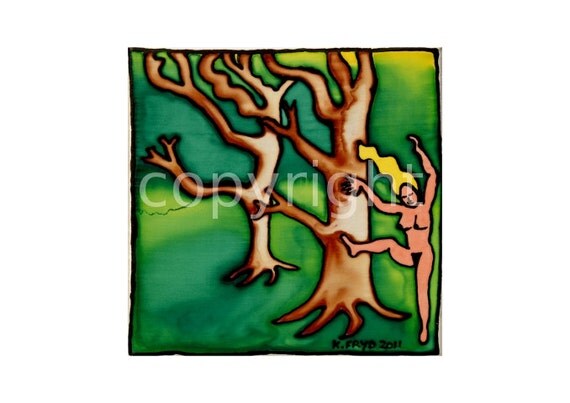As I have said in a previous blog, the success of my crowd funding campaign made me suddenly feel that all my ideas for projects were now possible - the world is my oyster! It was a fantastic confidence boost and I would recommend it to all artists.
For clarity, this successful campaign followed two very unsuccessful ones, but what it did mean is that I learnt from my errors and hopefully my advice will mean you don't have to repeat the same mistakes.
Follow all these steps to help towards creating your own successful campaign:
Choose a target amount.
With my first failed attempt I set a high target of about £2000, this was mainly for materials to make some artwork. On my second and third attempt I started out with a small project which had a target of only £300. Why did I choose a low amount? Well, I realised it is a good idea (but not essential) to building trust with your sponsors. Even if some of those sponsors are friends and relatives, it doesn't mean they would actually trust you to deliver the goods! It's a bit like lending someone money until they receive the promise they paid for. Although it would be fraudulent and very bad form not to fulfil the promises you've offered, keeping to them means they will trust you the next time you have a project and perhaps risk a little more money than before.
Find a good crowd funding site.
Take a good look around at all the crowd funding sites available and have a good look at the positives each one provides. I didn't do this with my first attempt. I went to the first site that I heard about and didn't research any others. I won't mention it here, and it may well have improved, but it had lots of bad technical issues and would only accept Paypal.
I would however highly recommend the site
Sponsume.com. It was slick and professional and didn't solely rely on Paypal payments, which I discovered, was important!
I was under the illusion that everyone had Paypal because of Ebay. But actually a lot of people, especially the ones with larger disposable income actually don't use ebay or are very guarded when it comes to giving bank information to other companies, even if it is a company with as big a name and as secure as Paypal!
Sponsume.com was also fantastic because you could keep whatever amount you raised without actually reaching the target. So as long as you can fulfil the promises you can keep all the money you have tirelessly fundraised where as other sites don't always let you do that.
Choose a project.
As an artist, there are various types of projects you can opt for.
Do you want to raise some capital for an expensive piece of machinery, electronics or tools? Or some capital for some printed goods, stock or art materials? Or maybe you want to raise money to hold an exhibition?
I wanted to raise money to buy
cards, printed with some of my artwork, and I wanted to get the best deal I could to enable me to resell the cards at an affordable price so I needed to purchase a larger number than I might need straight away.
Crowd funding had the added bonus of pre-selling a large number of the cards which was fantastic!
My next crowd funding project will be in two parts, the first for publishing a book and the second for an exhibition. But they are both connected in theme so I hope to run them within a few months of each other.
Promises/ Rewards
You need to have a long hard think about the rewards you can offer. I spent a long time looking at successful projects on the
Sponsume website and what sort of thing was offered. I sold rewards between £2 and £50, but I also had higher priced rewards which didn't sell. I think it is important to have a good range of prices and rewards on offer. And always a good idea to have a low option so that almost everyone is able to participate. My project was a card printing project and in the end, all I had sold was
cards, but I did have many other options such as painting parties and fridge magnets.
Do the Maths!
I believe this is the case for any funding that you are trying to get. Crowd funding is no different. It is so important to work out the figures. It is not as simple as thinking I need x amount to do 'this thing'. I had to work out what profit I was actually receiving from each reward after working out the cost of posting them out, fees to the website provider and paypal fees for when the money is transferred to you and also the fees when the money is transferred to your bank, if you are not spending directly from Paypal.
Your target will end up to be much higher that you first imagined, and you must account for all of this before going live or you will get into difficulty.
Getting people involved.
My project only involved one other person and their business at the production stage and he was not a friend so I couldn't ask him to share my campaign. Well I might have tried but he didn't have many followers. I only just hit my target and I believe everyone will have the potential to raise £200 minimum but this does depend on the number of friends and their level of income.
I believe the more people you get involved in the project either as a group project or as employees or contractors in getting your project realised, the more people you will reach and the more money will be raised.
This is just a theory at this stage and will be tested out in my next couple of crowd funding project where I hope to commission some friends/colleagues to help in specific areas.
I have also read that you do have to be careful of the overlap of friends, so it is maybe bast not to choose too many people in the same circle of friends or they'll all be asking the same people for funding.
Video - be seen!
I did two crowd funding projects and therefore videos before I succeeded with this one. There were a few reasons for this, project 1 failed because:
1- It had too large a target and I was never going to reach the high total as a first project.
2- I was offering work I hadn't created yet and customers were not really sure what they were going to receive.
3- I made a video which I thought was funny and entertaining, which involved me singing and a ukelele but must have failed to get my point across!
4- The website I used for this project only accepted Paypal payments.
So I made up a completely different project which failed because I had not addressed the problem with Paypal payments but also the video was terrible.
However, what I did get with this second project was some positive comments from some close friends who really wanted to help me and I did get some funding but I didn't have enough charitable close friends to reach my target. I finally listened to the feedback about people not wanting to use Paypal and went in search of a better crowd funding site which is when I found Sponsume.com.
I made a new video after reading tips and advice about funders wanting to see who their money was going to. (My previous video was a badly done animation).
I went live with the project but wasn't getting many sponsors, so asked my friends to check out the video and give me some critical advice. This was great because it served two purposes. It meant people were more likely to watch the video and find out about the project and I was also lucky enough to receive some great advice on how to improve the whole campaign, from a friend.
What is in it for others?
One friend said the video was more about what I wanted and needed than explaining the really good things that the sponsors would benefit from. They wanted to hear what was in it for them and not so much what I was getting from it. I believe my friend's advice was invaluable, I completely rewrote the wording and re did the video.
I would suggest thinking about whether you would do this project anyway, without extra funding? That this funding would just make your project bigger and better. The positives that funders will get out of backing you at this stage. Telling your story of why you are doing this? (Not the raising money bit - that goes without saying). Create that buzz! And leave out the neediness!
Social Media and Mailing Lists - Getting the word out!
I spent a long time on twitter and facebook and also sending out information to my mailing list.
This was almost the entire way I spread the word. However towards the end I started talking to people about the project and this helped enormously.
Facebook is now so hit and miss so in the end I invited people via an events page with all the information on there so I could make sure I reached more people than just in a status update.
I also got sponsors through twitter, however most were friends but I did have two strangers from twitter sponsor me for low amounts. Still all those small amounts add up and I wouldn't have hit my target without them!
(One of those strangers was Jo Whitby from the band
Laurence Made Me Cry and she was also running her own campaign to create a music album, I backed her and have just received my CD through the post! Very exciting - one day she could be famous! I expect she is thinking the same thing about me. ;-) )
I hope some of these points have been of use and if you have any questions that I haven't answered please leave a comment.
Now be free to go and create your own crowd funding campaign and IT WILL BE A SUCCESS!!















